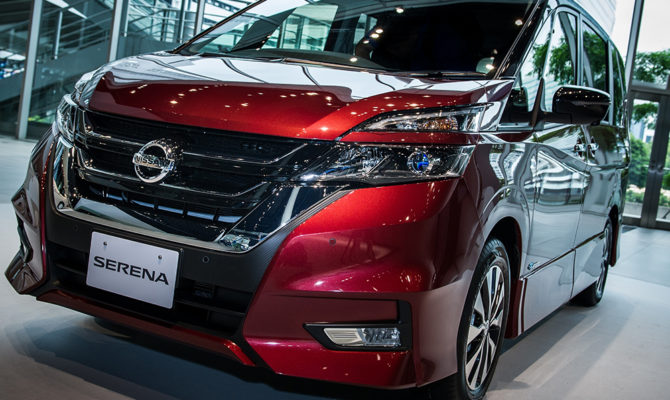Nissan will produce vehicles that allow the driver to choose whether to leave control to automated driving systems or remain in control throughout.
A former NASA researcher, worked on human-robot interactions, is now working on artificial intelligence projects for Nissan’s autonomous vehicles.
“Bringing this new technology to society, it will change so many things,” says Maarten Sierhuis, director of the Nissan Research Center (NRC) in California’s Silicon Valley.
“And call me crazy, but for me part of my drive of wanting to be thinking about these kinds of problems is that I want it to be done right.”


The Dutch national has a people-first approach that’s very much in line with Nissan’s autonomous vehicle strategy, which is focused on providing drivers with new choices on the road toward a fully “self-driving” vehicle, which the automaker believes is at least a decade away.
Nissan will produce vehicles that allow the driver to choose whether to leave control to automated driving systems or remain in control throughout.
Even when the driver is controlling the vehicle, the autonomous features must continue to monitor conditions and, in the event of imminent danger, assist the driver in avoiding an accident.
Sierhuis, who holds a Ph.D. in artificial intelligence from the University of Amsterdam, says his team will apply anthropologic learnings to the design of the autonomous systems — a strategy that he has employed since the early 1990s, first at NYNEX Corp. (now Verizon) and later at NASA.
That means studying how humans interact with the systems and ensuring that we “build systems that are good for people,” he says.
The first of the autonomous drive technologies was introduced this July. Known as “ProPILOT,” it allows cars to drive autonomously and safely in heavy, stop-and-go traffic on highways.
In 2018, Nissan expects to unveil a “multiple-lane control” application that can autonomously negotiate hazards and change lanes during highway driving. In 2020, it plans to add the capability for the vehicle to navigate city driving and intersections without driver intervention.
By that time, the Renault-Nissan Alliance plans to launch more than 10 models with significant autonomous driving functionalities in the U.S., Japan, Europe and China.
“I want the capability to drive myself and I want the capability to be driven…And I will decide which capability I want to have happen at that moment.”
Sierhuis uses his daily hour-long commute from his home in San Francisco to the research center in Sunnyvale to show the advantages such a flexible system will offer.
“The only thing I really enjoy about commuting is that that’s the time that I have to myself,” he says. And if the car can drive him part of the way, “that would be to me the best thing that can happen.”
Drivers will have productive or relaxing options for that newfound down time: Nissan plans to roll out a suite of connected services over the next several years, including smartphone integration, access to environment and traffic information through on-board communications systems, and remote interaction with the vehicle via a mobile app.
Recent Comments
- { Enjoyed your Forest of Bowland in the BMW X5M, particularly the photo of the BMW in front of the main part of Stonyhurst College where... }
- { Bantam designed the Jeep, not Willy's or Ford. The American military gave the original Bantam prototype to Willys and Ford to copy. There is plenty... }
- { All Escalades come with a 6.2-lilter V8 engine that produces 420 horsepower. A six-speed automatic is the only transmission offered and drives the rear wheels.... }
- { Alexandra is an excellent journalist. }
Popular Posts
- Journey to a ‘Sparkling’ Luxury Okanagan Resort “Four lucky readers will put a Dodge Journey’s weekend-...
- The Need For Speed: Hike Those Highway Limits More than half of those polled believe the province sho...
- Drives-U-Crazy… Erratic drivers. An early morning drive from Kelowna to Vancouver is nor...
- Readers Respond: The Pros and Cons of Increasing B.C. Speed Limits Increasing the speed limits will only increase risk to...
- Honda CR-V Review: The Compact Crossover To Get Things Done The CRV is a very stylish and aerodynamic crossover veh...






